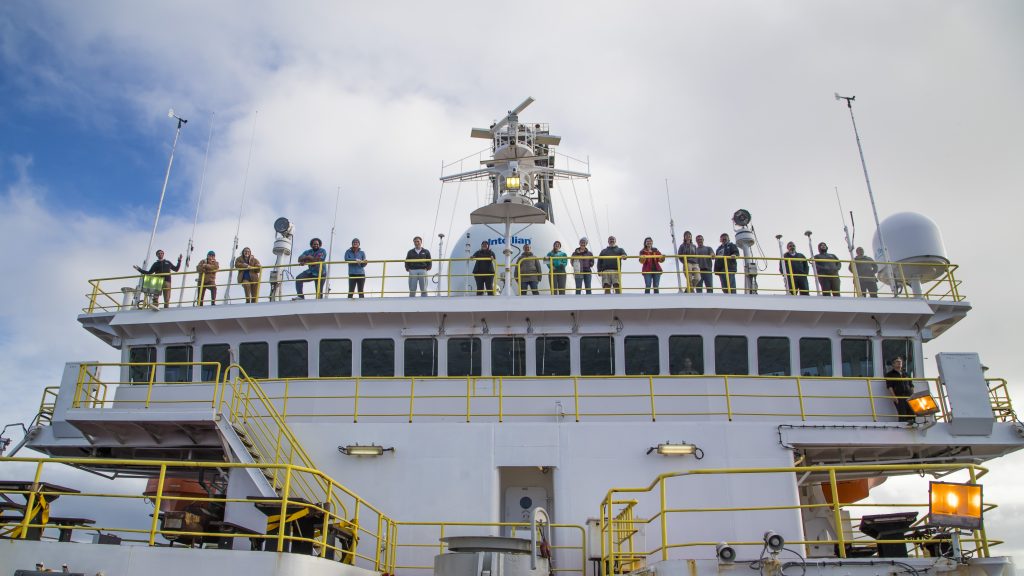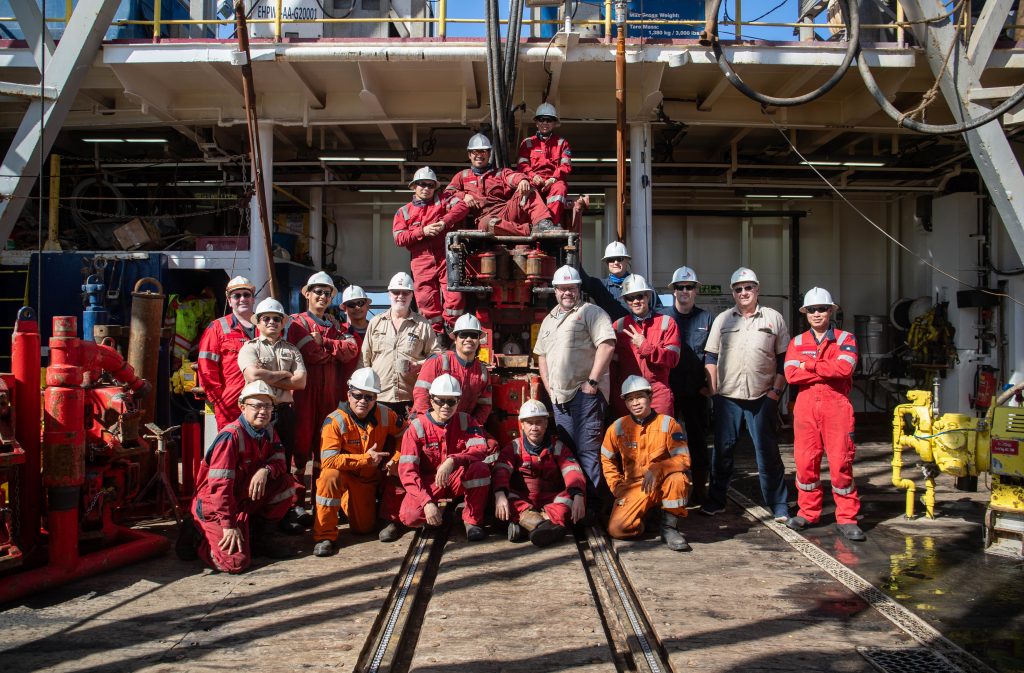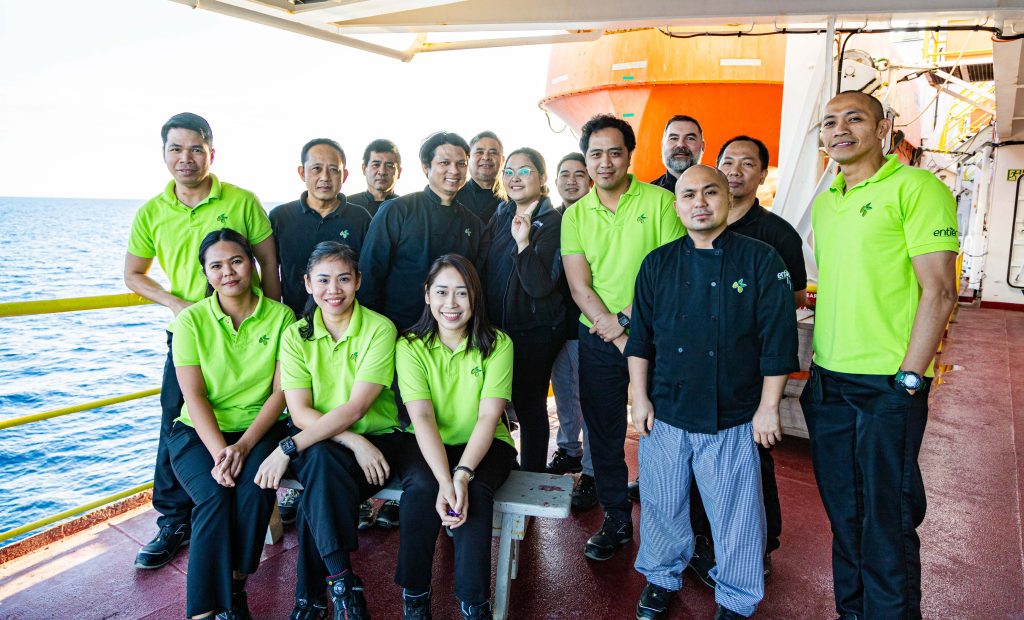4.1 Starting at the Top

Each expedition on Glomar Challenger and JOIDES Resolution (JR) lasted approximately two months. After returning to port with sediment and/or basement material collected from the deep sea, the scientists, technicians, and crew disembarked, and a new group boarded to begin the next expedition. While the scientists varied with each expedition, bringing different knowledge and skills to achieve specific objectives, the technicians and crew served on a two-months-on, two-months-off rotation throughout the year. During the final IODP phase of the JR, most technicians returned to Texas A&M University, home of the JOIDES Resolution Science Operator (JRSO), to continue working on shore during their off-ship periods. This rotational system meant that each position on the scientific ocean drilling vessels was filled by two individuals alternating shifts, including the ship captains!
SciOD Spotlight – JOIDES Resolution ship captains
Meet the two JR Captains that were serving at the conclusion of the International Ocean Discovery Program in 2024 – Captain Jake Robinson and Captain Harm Nienhuis.
The duties of a JOIDES Resolution Captain included directing all ship functions, overseeing all that happened on board, and making critical decisions when necessary. A top priority was safety, which included ensuring the movement of the ship from one location to another was completed in accordance with safety requirements, and that the people on board were safe and following procedures during daily work activities. Essential skills for the Captain included observation on and around the ship, management of crew and navigation activities, and the ability to communicate with people from different global cultures who sailed on board.
But how did the two JR Captains start their journeys into these roles, and why did they select this career? Read each of these articles to learn more about Captain Jake and Captain Harm.
This article was originally published in The Drilling Dispatch newsletter, published by the U.S. Science Support Program (USSSP) for scientific ocean drilling, June 2023.
This article was originally published in The Drilling Dispatch newsletter, published by the U.S. Science Support Program (USSSP) for scientific ocean drilling, November 2023.
Exercise: Reviewing the Journeys of the JR Captains
After reading the two articles above, respond to the following questions:
a) What experiences or influences sparked each Captain’s interest in pursuing a career related to the ocean?
b) What academic backgrounds and work experiences did both individuals share before becoming Captains of the JOIDES Resolution?
c) Beyond technical knowledge of the ship and drilling operations, what other skills are essential for someone serving as a ship’s captain? Explain why these skills are important and how they contribute to the role.
Those that worked under the captains, from the rest of the Bridge crew to those that work on deck, were critical to the success of the acquisition of core material and the percent core recovery.

Another essential crew on board included those that made meals four times a day in the Galley and maintained the cleanliness of the ship.

Once the core arrived on deck, specialized technicians in each onboard laboratory worked closely with the scientists to prepare and analyze the samples. Future sections of this OER will do a deeper dive into the critical roles of these laboratory technicians and their essential contributions throughout an expedition.
Image 1 – The IODP technicians all line up to catch the first core during cross-over. (Credit: Sandra Herrmann); Image 2 – From left, IODP JRSO marine technicians Kara Vadman (Marine Laboratory Specialist), Keith Dupuis (Publications Specialist), Carel Lewis (Curatorial Specialist), and Oscar Cavazos (Marine Laboratory Specialist) cut a recently drilled core on the catwalk to obtain a whole-round sample for MBIO analysis. (Credit: Erick Bravo). Both photos are from IODP JRSO, MerlinOne photo archive, CC BY 4.0.
On board every expedition was the Expedition Project Manager (EPM), an IODP JRSO staff scientist who oversaw all logistical and administrative aspects of the mission. The EPM was a key liaison, meeting daily with the scientists, laboratory technicians and drilling operations project manager to align the scientific objectives with each phase of the project. Learn more about the science pathway of IODP JRSO Staff Scientist Laurel Childress and her adventures as an Expedition Project Manager (EPM).
This article was originally published in The Drilling Dispatch newsletter, published by the U.S. Science Support Program (USSSP) for scientific ocean drilling, April 2024.

